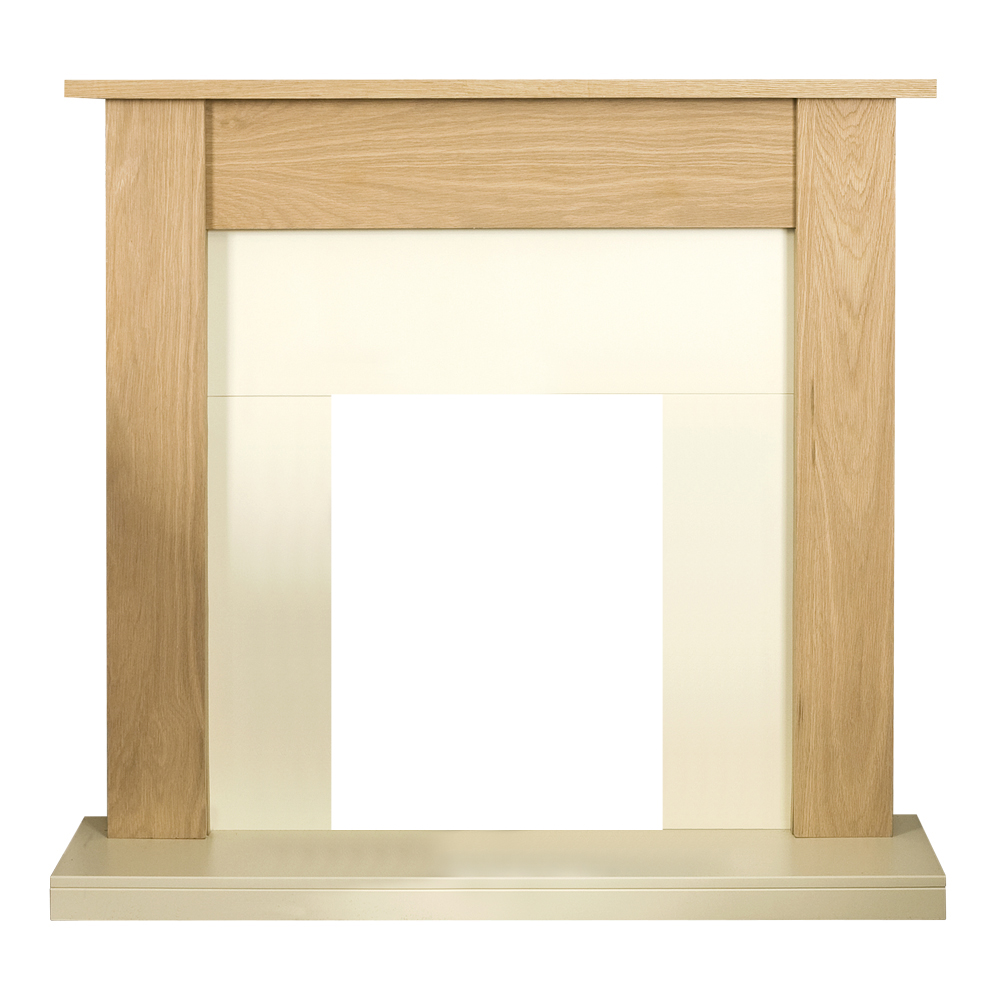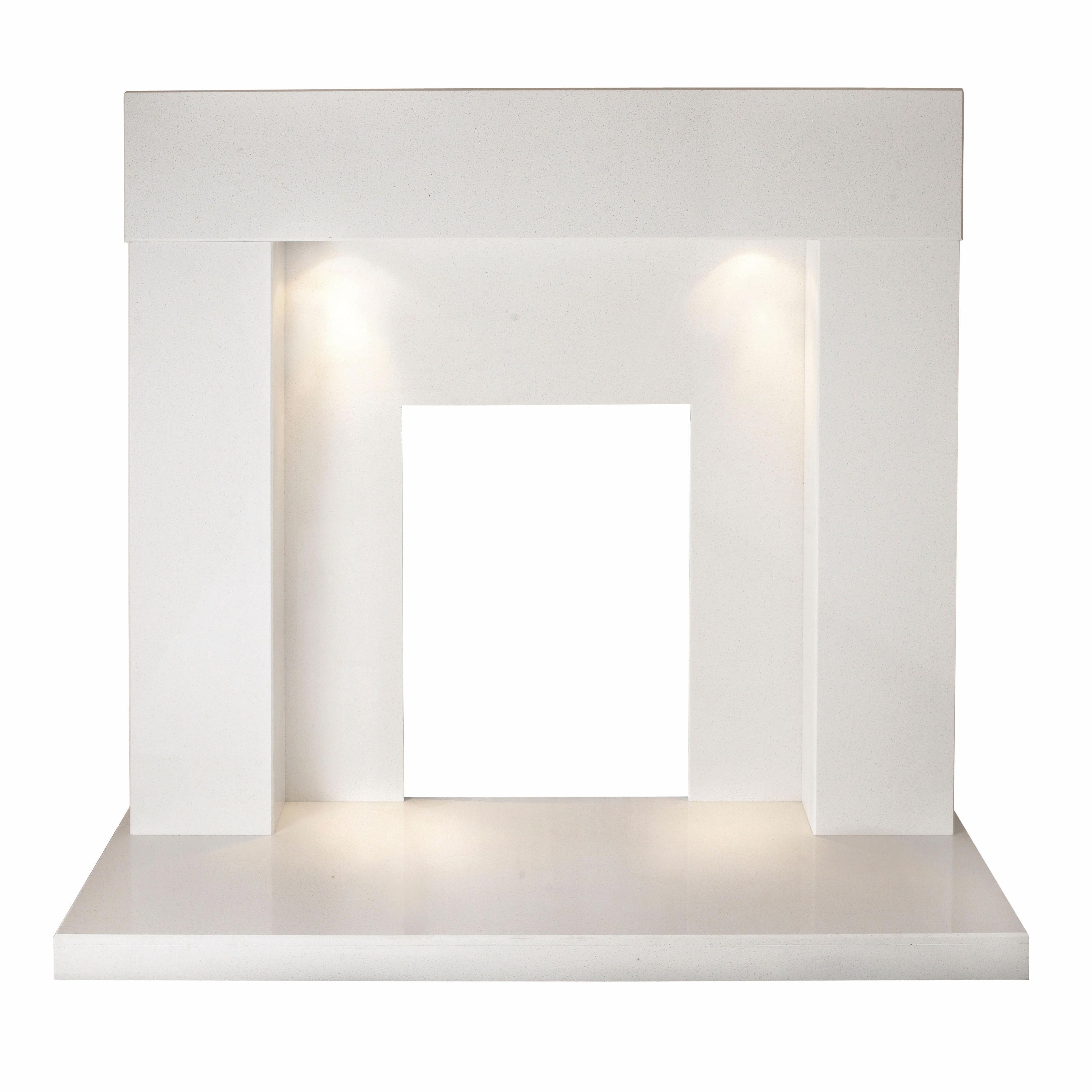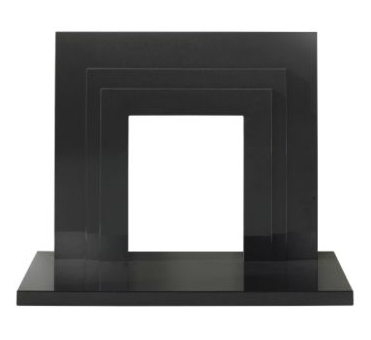The world of fireplaces is ever changing and quickly evolving, and today there are not only hundreds of colours and styles available to choose from, but also a plethora of materials as well. If you’re in the market for a new focal point, but aren’t sure which way to turn, you could very easily get lost in a tangle of fieldstones, ledgestones and concrete slabs.
Sometimes, though, nothing beats a good classic.
If you’re after a safe bet, here are three proven materials to consider:
 MDF
MDF
Although the name can put people off, MDF is a versatile material that is a surprising candidate for a fireplace choice. Straightforward to install and maintain, they are the favourite option for DIY buffs.
Pros:
+ Cheapest
By far the cheapest option on offer, MDF can really help if you’re on a budget. Straightforward to install, the lack of intricate installation gives you a second saving, and there are no issues with maintenance or costs to keep your fireplace clean.
+ Easy to Manipulate
The majority of MDF fireplaces will be suitable for painting, staining or lacquering (if they don’t come already finished) which allows you to fully customise your look, and ensure that you get the exact focal point you’re after.
+ Easy to Move, and Easy to Change
Historically, fireplaces would be in place for tens – if not hundreds – of years, so if you made a mistake with your choice, or moved into a house and inherited something less than aesthetically pleasing, it could often be quite pricey to remove or replace the eyesore. With an MDF suite, you get the added bonus that they mostly fit up against a flat wall, and can be repositioned, or even replaced, extremely easily. Fancy switching things up after a couple of years? MDF suites are the way to go.
Cons:
+ Not as Majestic as Marble
As good as they do look, and as much as you can finish them to your preference, it must be said that an MDF suite will never rival its marble or stone counterpart in terms of quality and character.
+ Limited Suitability
It turns out that MDF can be set on fire. As such, they are only suitable for use with electric fires! These days this isn’t overly problematic, as there is a vast array of electric fires in all shapes, sizes, colours and finishes, the majority of which kick out considerable heat, and even have different settings to boot. However, if it’s gas or solid fuel you’re after, an MDF fireplace is not for you.
+ Susceptible to Damage
While it might not be high up on the priority list, it is something that should definitely be considered. Those with inquisitive young children or over excitable pets – or even those who are just a bit clumsy – should weigh up the likelihood or corners being kicked or heavy items being dropped onto the fireplace. On the flip side of this, MDF is also the easiest material to repair, so don’t let it put you off too much!
 Marble
Marble
The archetype building material of fireplaces, its day is certainly not done just yet, and marble is still a fantastic, popular option for making a fireplace. Its inherent quality is sure to make it a focal point that adds class to any interior.
Pros:
+ Quality Finish
The look and feel of a smooth marble finish is something that is hard to beat – it is almost guaranteed to bring character and sophistication to a living space. Whether you’re looking at a chunky conglomerate, or a smooth, micro-marble, there are a huge range of colours and textures to choose from. The better retailers out there will offer bespoke services, meaning you can customise the size and colour of your fireplace to create exactly what you’re after.
+ Versatility
Marble is a sturdy material that is able to bear up under stronger heat outputs. This opens up the world of gas fires as a possibility, and potentially even solid fuel. (You’ll need to make sure you check with the manufacturer regarding solid fuel, as the marble will need to be “slabbed” to cope with the heat output of solid fuel fires. If it isn’t, it will have a limit as to the heat output it can cope with).
+ Sturdy and Durable
As long as you take care of a marble fireplace, it will keep looking fantastic for years to come. A little bit of work sealing your fireplace and swift and careful cleaning if anything is spilt on it will make for a splendid looking focal point for years to come.
Cons:
+ Price Tag
With fireplaces, it certainly rings true that “you get what you pay for”. Marble is a quality material, that looks and feels great, but the thing that can put a lot of people off, is the high price tag that’s normally attached. As a piece of advice, the way to shop marble is by buying directly from a manufacturer. They can often price their products much more reasonably, and you can find some quality pieces from under £500.
+ Maintenance
A marble fireplace is something to be proud of, but if it gets dirty or stained, it can be quite a pain to clean. If it’s properly sealed, then you should be ok, but if you do spill anything on it, be sure to act quickly and combat the stain with the correct measure. See our post about “
How to Clean a Marble Fireplace” for help with what to do.
+ Limited Functionality
While marble can be a very versatile material, you need to be careful with which fire you are using. Some marbles have a limit as to the heat output they can withstand, and if this ignored, you can end up with a cracked fireplace on your hands very easily. Always be sure to check the manufacturer’s guidelines as to the fire that you are able to use, and if you are after a solid fuel fire, you must ensure that the hearth and back panel are properly “slabbed” and treated to allow for the high heat output.
 Granite
Granite
A popular, modern alternative, granite manages to combine a lot of the allure that marble carries, but brings with it an edgy, contemporary feel as well. Sharing the high quality feel of marble, this is another material that will add class to your living room.
Pros:
+ Looks the Part
There is no denying the fact that a smouldering fire in the heart of a deep, black granite fireplace is an extremely attractive image. Normally textured with “speckles” or “flecks”, black granite can give the illusion of sparkling and certainly won’t look shabby in any interior style.
+ Solid by Name, Solid By Nature
Granite is by far the most “solid-fuel-ready” material about. It is more naturally robust that marble, and more commonly slabbed by manufacturers to allow for solid fuel compatibility. This means it is suitable for the widest range of fires and gives you the most options for creating your focal point.
+ Stays Clean
Granite is great for concealing small stains or bits of dirt. Not to imply that you don’t need to clean your fireplace, but with a granite surround, you don’t have to worry about it looking grimy or grubby, as it just doesn’t show up as obviously.
Cons:
+ Price Tag
Similar to marble, this is a relatively high quality material, which brings with it a relatively high cost. Again, look to buy directly from manufacturers where possible, as this will help push the price down.
+ Darkening Factor
Given its black colour and glowering demeanour, granite is definitely a no-go if your room is small, poorly lit, or already has a lot of darkening features.
+ Limited Choice
Although it can make a great focal point, there just doesn’t seem to be as wide a range of fireplaces available as other materials. This can be a limiting factor, particularly if you like something a bit different – look out for companies that can create bespoke or custom orders.









Share